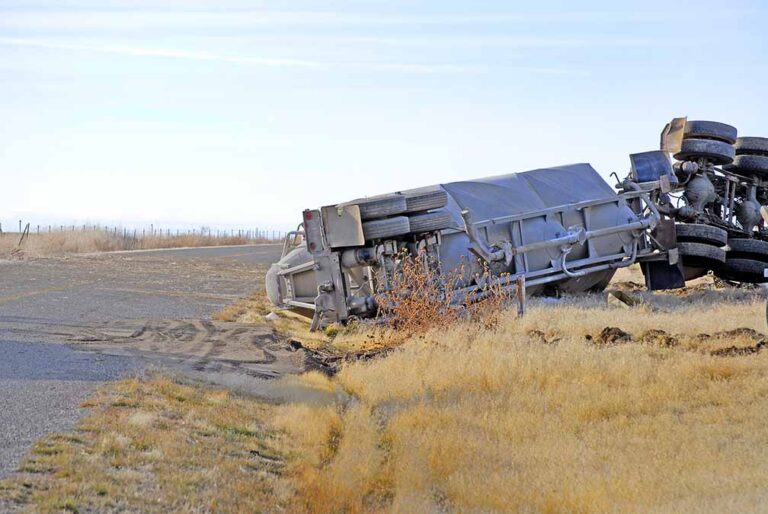WASHINGTON — In 2019, 5,237 large trucks and buses were involved in fatal crashes, a 2% increase from 2018.
That’s according to the Federal Motor Carrier Safety Administration’s (FMCSA) recently updated Large Truck and Bus Crash Facts. The FMCSA defines large trucks as weighing more than 10,000 pounds.
From 2018 to 2019, large truck and bus fatalities per 100 million vehicle miles traveled by all motor vehicles declined from 0.162 to 0.161, 21% below the 21st-century peak of 0.205 in 2000.
There was a 34% decrease in the number of fatal crashes involving large trucks or buses between 2005 and 2009, followed by an increase of 47% between 2009 and 2019, the report states.
From 2018 to 2019, the number of fatal crashes involving large trucks or buses increased by less than 1%.
The number of injury crashes involving large trucks or buses decreased steadily from 102,000 in 2002 to 60,000 in 2009 (a decline of 41%). From 2009 to 2015, injury crashes increased 62 % to 97,000 (based on GES data). From 2016 to 2019, according to NHTSA’s CRSS data, large truck and bus injury crashes increased 13 % (from 112,000 in 2016 to 127,000 in 2019).
From 2018 to 2019, the number of large trucks involved in fatal crashes increased 2%, from 4,909 to 5,005, and the large truck involvement rate (large trucks involved in fatal crashes per 100 million miles traveled by large trucks) increased 4%, from 1.61 to 1.67.
The number of large trucks involved in injury crashes increased by 6%, from 112,000 to 119,000, from 2018 to 2019.
The number of large trucks involved in property-damage-only crashes remained constant at 414,000 during those years.
Of the 4,949 drivers of large trucks involved in fatal crashes in 2019, 354 (7%) were 25 years of age or younger, and 361 (7%) were 66 years of age or older.
In 2019, 13% (795) of large truck occupants in fatal crashes were not wearing a safety belt, of which 337 (42%) were killed in the crash. In contrast, only 393 (8%) of the 4,712 large truck occupants wearing safety belts in fatal crashes were killed. Nine % of the 4,949 drivers of large trucks involved in fatal crashes (454) were not wearing a safety belt at the time of the crash.
In 2019, 299 of the 4,949 large truck drivers in fatal crashes (6%) tested positive for at least one drug, although 59% of them were not tested. Conversely, 8,413 of the 50,931 drivers of all vehicles in fatal crashes (17%) tested positive for at least one drug, although 47% of them were not tested. A driver is more likely to be tested for drugs if there is information from the crash indicating that drugs may have been a factor.
In 2019, at least one driver-related factor was recorded for 33 % of the large truck drivers in fatal crashes, compared to 53% of the passenger vehicle drivers in fatal crashes. “Speeding of Any Kind” was the most frequent driver-related factor for drivers of both vehicle types; “Distraction/Inattention” was the second most common for large truck drivers, and “Impairment (Fatigue, Alcohol, Illness, etc.)” was the second most common for passenger vehicle drivers.
There were 892 large truck occupant fatalities in 2019, an increase of less than 1 % from the 890 fatalities in 2018. In 2019, 86 % of these occupant fatalities were drivers of large trucks, and 14 % were passengers in large trucks.
The Trucker News Staff produces engaging content for not only TheTrucker.com, but also The Trucker Newspaper, which has been serving the trucking industry for more than 30 years. With a focus on drivers, the Trucker News Staff aims to provide relevant, objective content pertaining to the trucking segment of the transportation industry. The Trucker News Staff is based in Little Rock, Arkansas.








